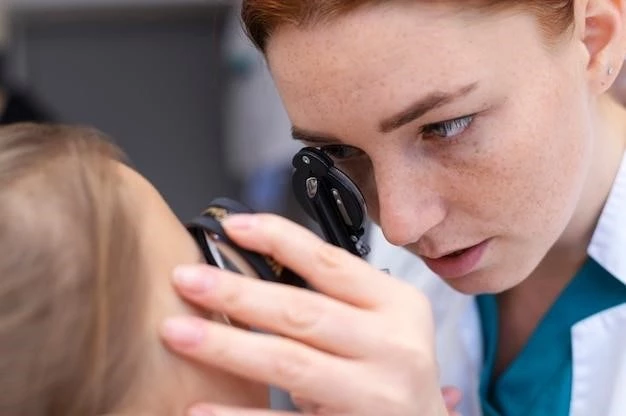Introduction to Oculodentoosseous Dysplasia Dominant
Oculodentoosseous dysplasia‚ also known as ODDD‚ is a rare autosomal dominant disorder characterized by variable expressivity. It primarily affects craniofacial‚ dental‚ ocular‚ and digital development.
Overview of the Rare Disorder
Oculodentoosseous dysplasia‚ or ODDD‚ is a rare autosomal dominant disorder with high penetrance and phenotypic variability. This condition affects craniofacial‚ dental‚ ocular‚ and digital development. It can be caused by mutations in the GJA1 gene and presents with facial anomalies‚ dental issues‚ and ocular abnormalities. Understanding the features and inheritance of ODDD is crucial for diagnosis and management.
Clinical Features of Oculodentoosseous Dysplasia Dominant
Oculodentoosseous dysplasia‚ an autosomal dominant disorder‚ presents with a range of craniofacial‚ dental‚ ocular‚ and digital abnormalities. Common features include facial anomalies‚ dental issues like enamel dysplasia‚ and ocular abnormalities.
Oculodentoosseous dysplasia dominant manifests with distinct facial features such as a long‚ thin nose‚ hypoplastic alae nasi‚ cleft lip‚ or palate. Ocular abnormalities involve issues like microphthalmia‚ short palpebral fissures‚ epicanthal folds‚ and microcornea. Awareness of these abnormalities aids in early recognition and appropriate management of the condition.
Facial and Ocular Abnormalities
Oculodentoosseous dysplasia dominant is characterized by unique facial features like a long‚ thin nose with hypoplastic alae nasi and ocular anomalies including microphthalmia‚ short palpebral fissures‚ and epicanthal folds; Early identification of these abnormalities is crucial for appropriate intervention.

Genetic Basis of Oculodentoosseous Dysplasia Dominant
Oculodentoosseous dysplasia dominant is primarily an autosomal dominant disorder caused by mutations in the GJA1 gene‚ leading to variable expressivity and affecting multiple body systems.
Autosomal Dominant Inheritance
Oculodentoosseous dysplasia dominant follows an autosomal dominant pattern of inheritance due to mutations in the GJA1 gene. This genetic basis contributes to the variability in the expression of the disorder across affected individuals.
Mutations in the GJA1 Gene
Oculodentoosseous dysplasia dominant is associated with mutations in the GJA1 gene‚ which encodes connexin 43. These genetic alterations underlie the diverse manifestations observed in affected individuals‚ highlighting the importance of genetic testing and counseling for proper management.
Diagnosis and Differential Diagnosis
Diagnosis of Oculodentoosseous dysplasia dominant involves recognizing facial‚ ocular‚ and dental abnormalities. Differential diagnosis should consider other genetic and syndromic conditions with overlapping features.
Diagnostic Criteria for Oculodentoosseous Dysplasia Dominant
Oculodentoosseous dysplasia dominant diagnosis involves recognizing the distinct facial‚ ocular‚ and dental abnormalities associated with the condition. A thorough clinical evaluation and genetic testing may be necessary to confirm the presence of mutations in the GJA1 gene and differentiate it from other syndromic disorders with similar presentations.
Distinguishing Oculodentoosseous Dysplasia Dominant from Recessive Form
Oculodentoosseous dysplasia dominant and the recessive form differ in their inheritance patterns and severity of ocular affection‚ highlighting the importance of genetic testing for accurate diagnosis and appropriate management tailored to each individual’s condition.
Management and Treatment Approaches
Management of Oculodentoosseous dysplasia dominant involves a multi-disciplinary care team to address various symptoms and complications. Individualized treatment plans should be created to manage facial‚ ocular‚ dental abnormalities effectively.
Multi-Disciplinary Care Team Involvement
Management of Oculodentoosseous dysplasia dominant requires the collaboration of a multi-disciplinary care team‚ including geneticists‚ ophthalmologists‚ dentists‚ and orthopedic specialists. Coordinated efforts are essential to address the complex needs of individuals with this rare disorder effectively.
Addressing Specific Symptoms and Complications
Individuals with Oculodentoosseous dysplasia dominant may require targeted management for specific symptoms and complications‚ such as addressing dental abnormalities like enamel dysplasia and ensuring appropriate ocular care to manage issues like microphthalmia and short palpebral fissures effectively.

Prognosis and Long-term Outlook
Understanding the prognostic factors of Oculodentoosseous dysplasia dominant is essential for long-term management and quality of life considerations. Recognizing these factors can aid in providing personalized care and support for individuals with this rare disorder.
Understanding the Prognostic Factors
Prognosis and long-term outlook for individuals with Oculodentoosseous dysplasia dominant are influenced by various factors such as the severity of craniofacial‚ dental‚ and ocular abnormalities‚ response to treatment‚ and the presence of associated complications. Identifying and monitoring these prognostic factors can help healthcare providers tailor interventions and support to improve the quality of life for affected individuals.
Quality of Life Considerations
Individuals with Oculodentoosseous dysplasia dominant may face challenges impacting their quality of life‚ such as vision problems‚ dental issues‚ and facial abnormalities. Addressing these concerns through comprehensive care and support services can significantly enhance the overall well-being and quality of life for individuals living with this rare condition.
Current Research and Future Directions
Stay informed about ongoing studies on Oculodentoosseous dysplasia dominant‚ which aim to uncover potential therapeutic advancements for better management and outcomes. Follow the latest research for future directions in understanding and treating this rare disorder.
Ongoing Studies on Oculodentoosseous Dysplasia Dominant
Keep abreast of current research on Oculodentoosseous dysplasia dominant to stay informed about potential therapeutic advancements and emerging treatment strategies. Engaging with ongoing studies can offer valuable insights into the management and future directions for this rare genetic disorder.
Potential Therapeutic Advancements
There is limited information available about Oculodentoosseous Dysplasia Dominant. However‚ it is crucial to consult healthcare professionals for accurate diagnosis and individualized management strategies tailored to the specific needs of the affected individuals. Make sure to stay updated on any research findings and potential therapeutic advancements in the field to optimize care and outcomes.
